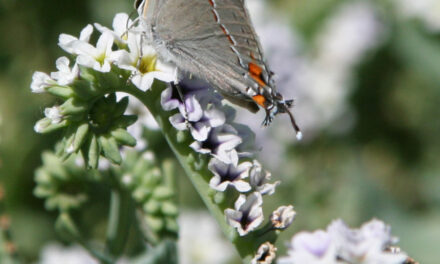Very soon there will be strange sounds coming from the San Luis National Wildlife Refuge. Eerie notes that begin in higher octaves then elevate in both pitch and volume to carry on the wind like wisps of smoke.
To the unknowing ear the strained whistles might bring haunted visions of wraiths floating above worn tombstones in a dark and forgotten cemetery. But to those who know, it’s the seasonal sound of bull tule elk calling females near and warning other bulls away as the rut, or breeding season, begins.
The sound the bulls make during breeding season is called bugling. It’s a far cry from eight-to-the-bar boogie woogie bugling, but female elk are drawn to it like gamblers to a poker game.
Most of the year mature bull elk prefer solitude and rarely associate with other elk. They spend their time eating, gaining weight, and growing the huge antlers that will be used in competition with other bull elk for females.
Younger bulls live in small bachelor herds and while many of them may try to compete with their elders during the rut by sneaking in while the big bulls are looking elsewhere, few succeed in luring cows into their own harem.
Elk are herd animals, and the females of the species epitomize that tendency. Except for when the cows are calving, they stay together with their current year offspring, and yearling calves, the males of which are called “spike” bulls, because they have a pair single point antlers referred to as “spikes.”
But when the rut begins, the yearling spike bulls are shunned and driven out of the cow herd. The older bulls or the “prime” bulls try to break up the main herd of cows into individual harems which they defend throughout the breeding season.
At the San Luis refuge, the bulls use the fence around the elk enclosure to their advantage by moving their harems to the fence and using that proximity to the enclosure to guard one side of the harem from other bulls that might try to steal them away. That behavior is a boon for visitors to the refuge since it often allows close views of the elk, both cows and bulls.
Occasionally, bulls can be seen battling by locking antlers and engaging in feats of strength, pushing and shoving their opponent, trying to wear them down send them packing. Mature bulls will also put on a show by thrashing their antlers through tall grass and other growth retaining some on their antlers and at the same time flinging vegetation high in the air. This behavior is performed, in part, to let off steam and vent frustration.
The elk enclosure at San Luis encompasses 789 acres of upland, wetland, and riparian habitat and currently contains about 40 elk.
The Merced National Wildlife Refuge which is located at 7430 West Sandy Mush Road, the San Luis National Wildlife Refuge and the San Joaquin River National Wildlife Refuge comprise the San Luis National Wildlife Refuge Complex. Its headquarters and visitor center are located just north of Los Banos off Highway 165 at 7376 South Wolfsen Road.
The refuges are open to visitors daily from one half-hour before sunrise to one half-hour after sunset. The visitor center is open Monday through Friday except federal holidays from 8 a.m. to 4:30 p.m.
For more information call 209 826-3508 ext. 127.

